This post may contain affiliate links. See my disclosure policy.
Not all pork chops are created equal—and how you cook them matters just as much as the cut you choose. This quick guide covers the different types of pork chops, how long to cook them, and the ideal internal temperature for tender, flavorful chops every time!
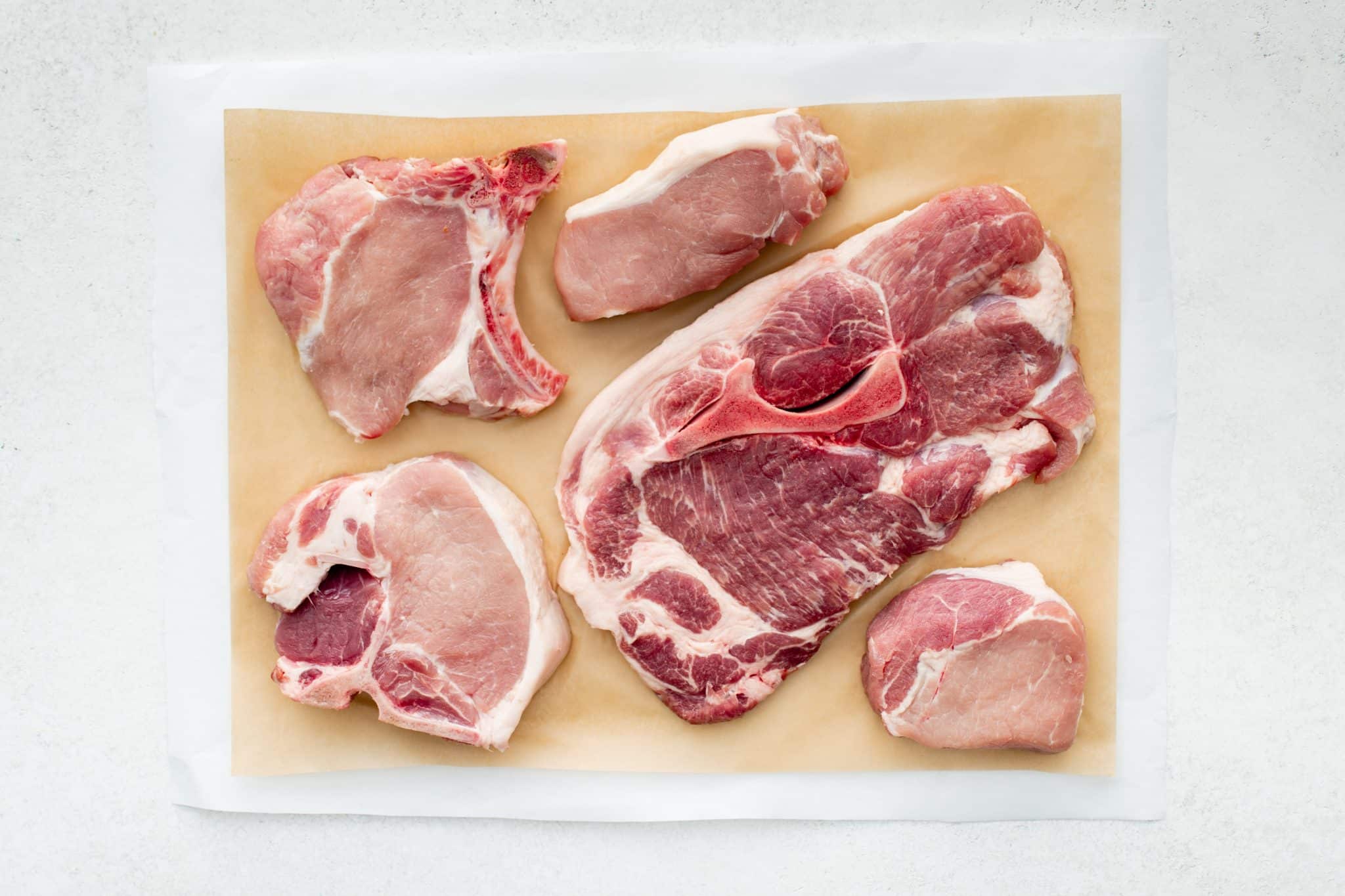
After more than a decade of cooking pork chops in every way you can think of, I’ve learned that the key to juicy, flavorful chops comes down to this: understanding your cuts, cooking them with confidence, and checking for doneness with a digital meat thermometer. In this guide, I’m breaking down everything you need to know to master pork chops at home, including the best cooking methods for each cut of pork chop, how long to cook them, and how to check for doneness without second-guessing yourself (oops, I already shared that last one).
In This Post
Understanding the Different Cuts of Pork Chops
Fun fact: The term pork chop doesn’t refer to just one single cut of meat—it’s actually an umbrella term for several different cuts that all come from the loin section of the pig, which runs from the shoulder to the hip. Depending on where the chop is cut along the loin, it could be a rib chop, loin chop, shoulder (blade) chop, boneless chop, or sirloin chop, each with unique characteristics.
Rib Chop
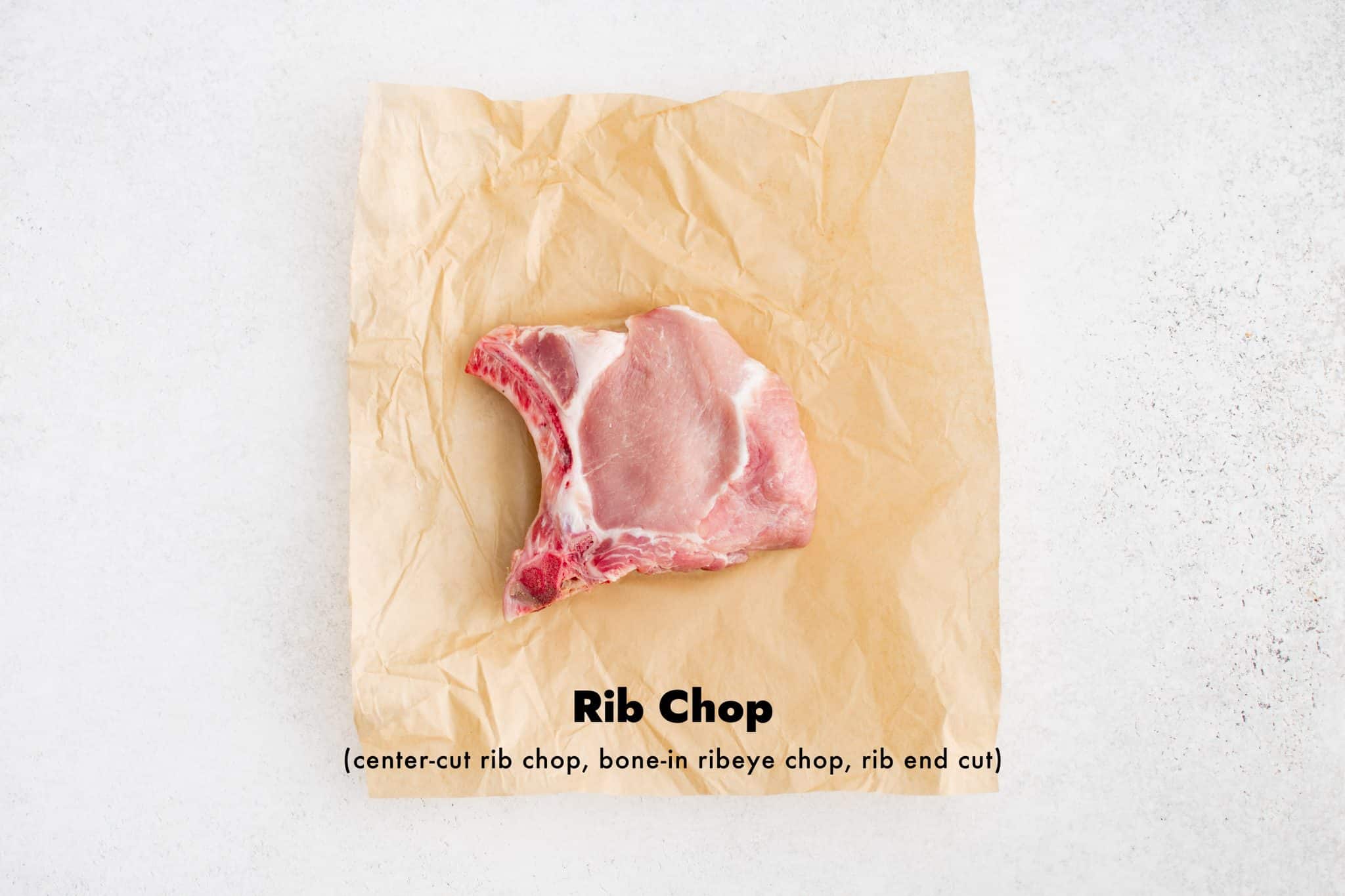
Rib chops are my favorite pork chop cut to cook and eat! They’re tender, juicy, and easy to work with, making them perfect for weeknight dinners or special occasions.
Buying Rib Chops
- Look for labels like: rib chops, center-cut rib chops, or bone-in rib chops.
- Cut location: From the rib section of the loin
- Texture & flavor: Naturally juicy with good fat marbling
- Bone-in or boneless: Bone-in, with a curved rib bone along one side. Not really. Once the bone is removed, the cut is more like a boneless loin chop than an actual rib chop.
- Ideal thickness: Choose chops that are 1 to 1½ inches thick for the best results. If your store doesn’t carry them pre-cut, ask the butcher for “1-inch thick, bone-in rib chops.”
Internal Temperature for Rib Chops
- Safe temp: 145°F (63°C) with a 3-minute rest
- Slightly pink in the center is okay—in fact, it’s ideal for juiciness
- Pro tip: Always use a digital meat thermometer to avoid overcooking
Best Cooking Methods for Rib Chops
Rib chops are perfect for quick, high-heat cooking methods that preserve their juiciness and create a beautiful sear.
- Grilling (1-inch chops): 4-6 minutes per side over medium-high direct heat.
- Pan-searing (1-inch chops): 3–4 minutes per side in a hot skillet plus 5-7 minutes in an oven preheated to 400°F.
- Roasting (1-inch chops): 15-20 minutes at 400°F.
Loin Chop
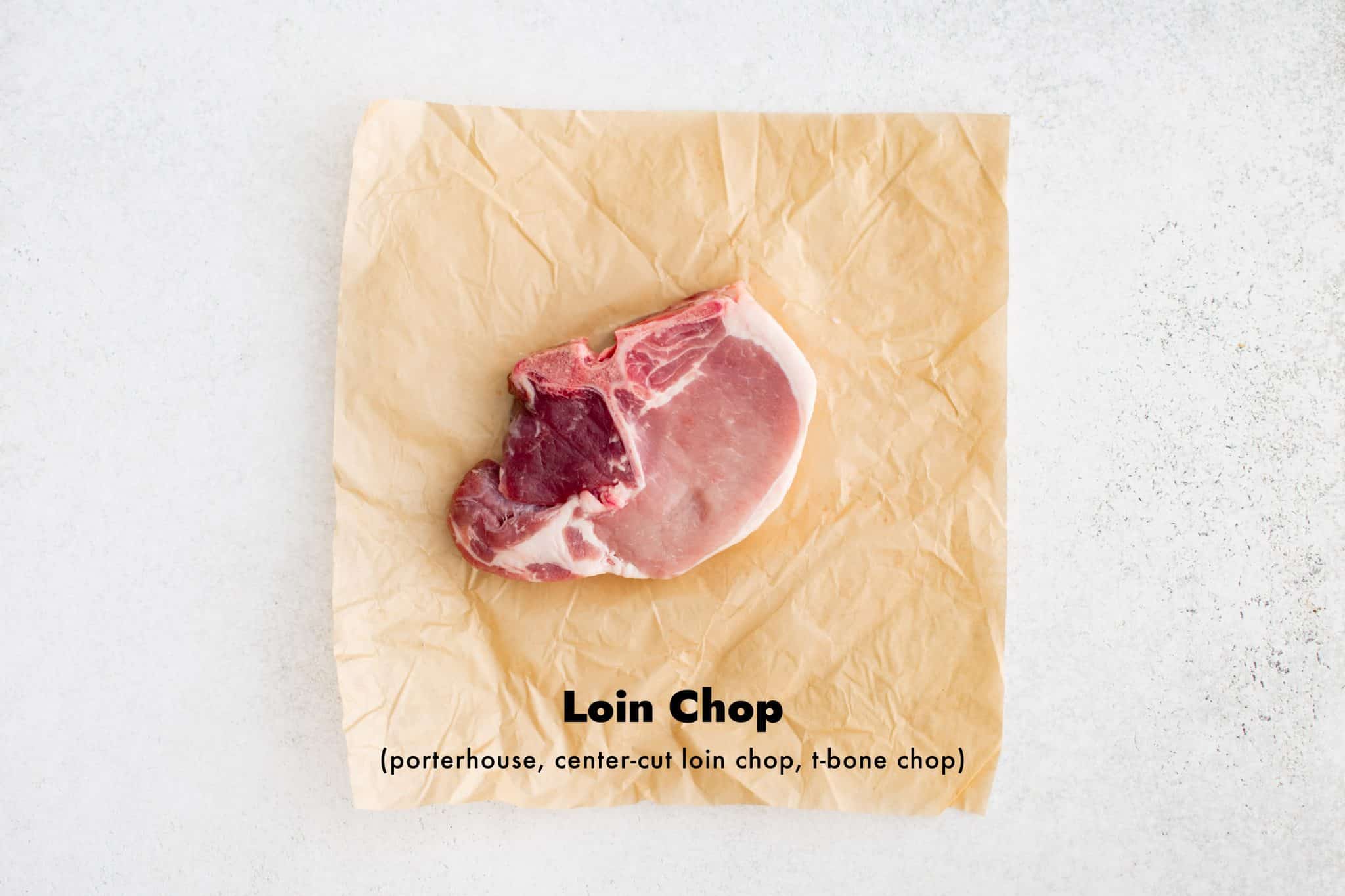
Loin chops are a lean and flavorful cut of pork that include both the loin and tenderloin muscles, separated by a T-shaped bone—similar to a pork porterhouse. The loin is firmer, while the tenderloin is smaller and more tender. This can make even cooking tricky since the two parts cook at different rates. Tip: Learn more about cooking each cut in this easy oven-roasted pork loin recipe and this delicious baked pork tenderloin recipe.
Buying loin chops
- Look for labels like: loin chops, center-cut loin chops, T-bone chops, or porterhouse pork chops.
- Cut location: From the center of the loin
- Texture & flavor: Mild and lean, with less fat than rib chops
- Bone-in or boneless: Bone-in with a T-shaped bone dividing the two muscles. Boneless loin chops are also available but dry out more quickly.
- Ideal thickness: Look for chops that are 1 to 1½ inches thick for better control and juiciness. Ask your butcher for “1-inch thick, bone-in loin chops with the tenderloin attached” if you’re unsure what to get.
Internal Temperature for Loin Chops
- Safe temp: 145°F (63°C) with a 3-minute rest
- A slight blush of pink in the center is perfectly safe and helps retain moisture.
- Always use a digital meat thermometer for the most accurate results.
Best Cooking Methods for Loin Chops
Loin chops are lean and best suited to quick-cooking methods that retain moisture and build flavor.
- Grilling (1-inch chops): 4-5 minutes per side. Watch the tenderloin side closely- it cooks faster than the loin.
- Sear-Roasting (1-inch chops): 3–4 minutes per side in a hot skillet plus 5–6 minutes at 400°F. Great for even cooking and bolder seasonings.
- Oven-Baked (1-inch chops): 15–18 minutes in a preheated 400°F oven. Best for stuffed or breaded loin chops that need slower, more indirect cooking.
Shoulder Chop
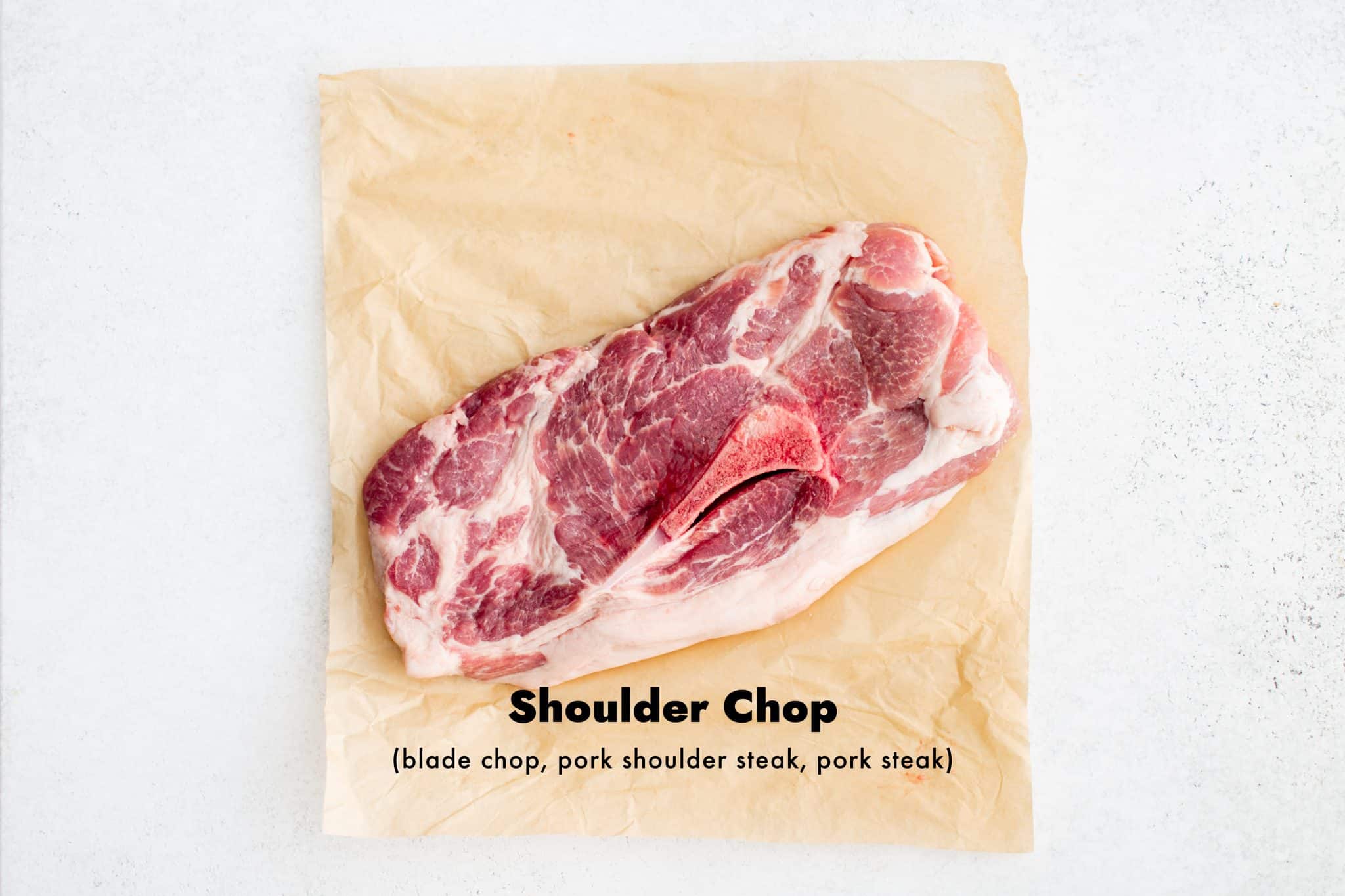
Shoulder chops—also called blade chops or pork shoulder steaks—are rich, flavorful cuts with more fat, connective tissue, and deeper color than other chops. They’re usually bone-in and cut from the front of the pig, near the shoulder (blade end).
Buying Shoulder Chops
- Look for labels like: shoulder chop, blade chop, pork shoulder steak, or pork blade steak.
- Cut location: From the blade end of the shoulder
- Bone-in or boneless: Bone-in with visible marbling and connective tissue. Boneless shoulder chops are less common and often sold as “pork shoulder steaks.”
- Color & texture: Darker pink or reddish; high in fat = lots of flavor
- Ideal thickness: Choose chops that are ¾ to 1 inch thick. Ask your butcher for “bone-in shoulder chops from the blade end” for the best texture and flavor.
Internal Temperature for Shoulder Chops
- Thin-cut (grilled): 145°F (63°C) + 3-minute rest
- For braised/slow-cooked chops: Aim for 190–200°F to fully break down connective tissue
- Use a digital meat thermometer to check for accurate doneness
Best Cooking Methods for Shoulder Chops
Because they contain more fat and connective tissue, shoulder chops shine when cooked low and slow. This transforms them from tough to tender bringing out their rich, porky flavor. Avoid quick-cooking methods unless chops are thin and well-marinated.
- Braising (¾–1 inch chops): 1.5 to 2 hours on low heat. Sear first, then simmer in broth, wine, or tomato-based sauce.
- Slow Cooking (any size): 6–8 hours on low, 3–4 on high. Set-it-and-forget-it meals with shredded or fall-apart texture.
- Grilling (½ inch or thinner, marinated): 4–5 minutes per side. Only grill thin, tenderized chops. The fat and connective tissue need prep to avoid toughness.
Boneless Chop
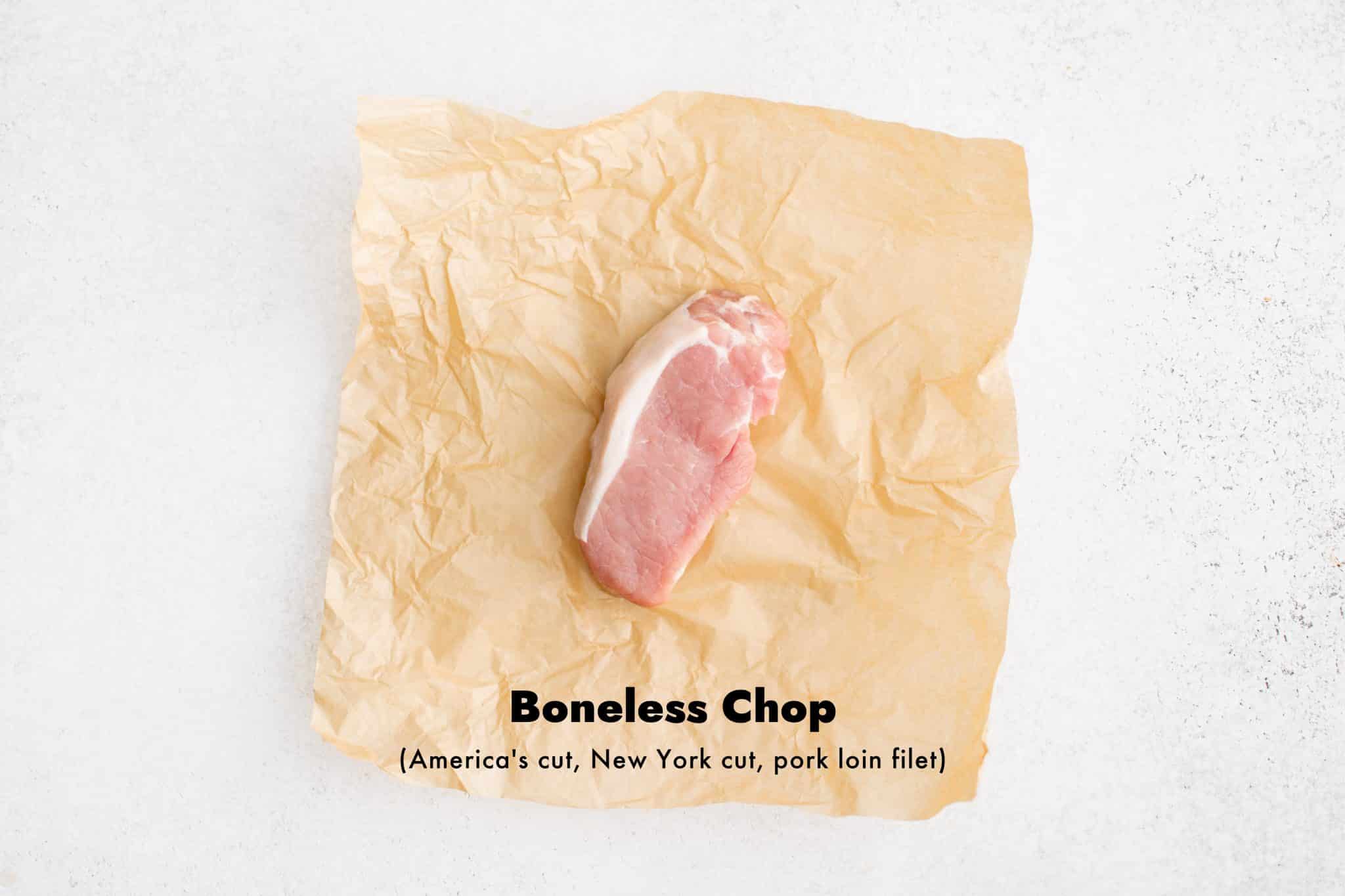
Boneless pork chops are a lean, convenient option cut from the loin section of the pig with the bone removed. They’re great for quick meals, but their low-fat content means they can easily become dry if overcooked.
Buying Boneless Pork Chops
- Look for labels like: boneless pork chops, boneless loin chops, or pork loin filets.
- Cut location: From the loin (bone removed)
- Texture & flavor: Very lean, mild flavor, and uniform in shape
- Best use: Great for quick cooking methods and weeknight dinners
- Ideal thickness: Look for chops that are ¾ to 1 inch thick. Thinner chops cook fast but require careful timing to stay juicy.
Internal Temperature for Boneless Chops
- Safe temp: 145°F (63°C) with a 3-minute rest
- A light pink center is perfectly safe and keeps the chop juicy
- Use a digital meat thermometer for best results—these cook fast!
Best Cooking Methods for Boneless Pork Chops
Boneless chops are best cooked quickly over moderate to high heat to avoid drying out. Since they have minimal fat and connective tissue, brining is highly recommended to help retain moisture.
- Grilling (¾–1 inch): 4-5 minutes per side. Marinate or brine beforehand for extra flavor and juiciness.
- Pan-Searing (½–1 inch): 3–4 minutes per side. Tip: Finish with butter-basting for a rich, flavorful crust.
- Roasting (1-inch): 15–20 minutes in a preheated 400°F oven. Great when breaded or glazed—don’t forget to rest after cooking.
Sirloin Chops
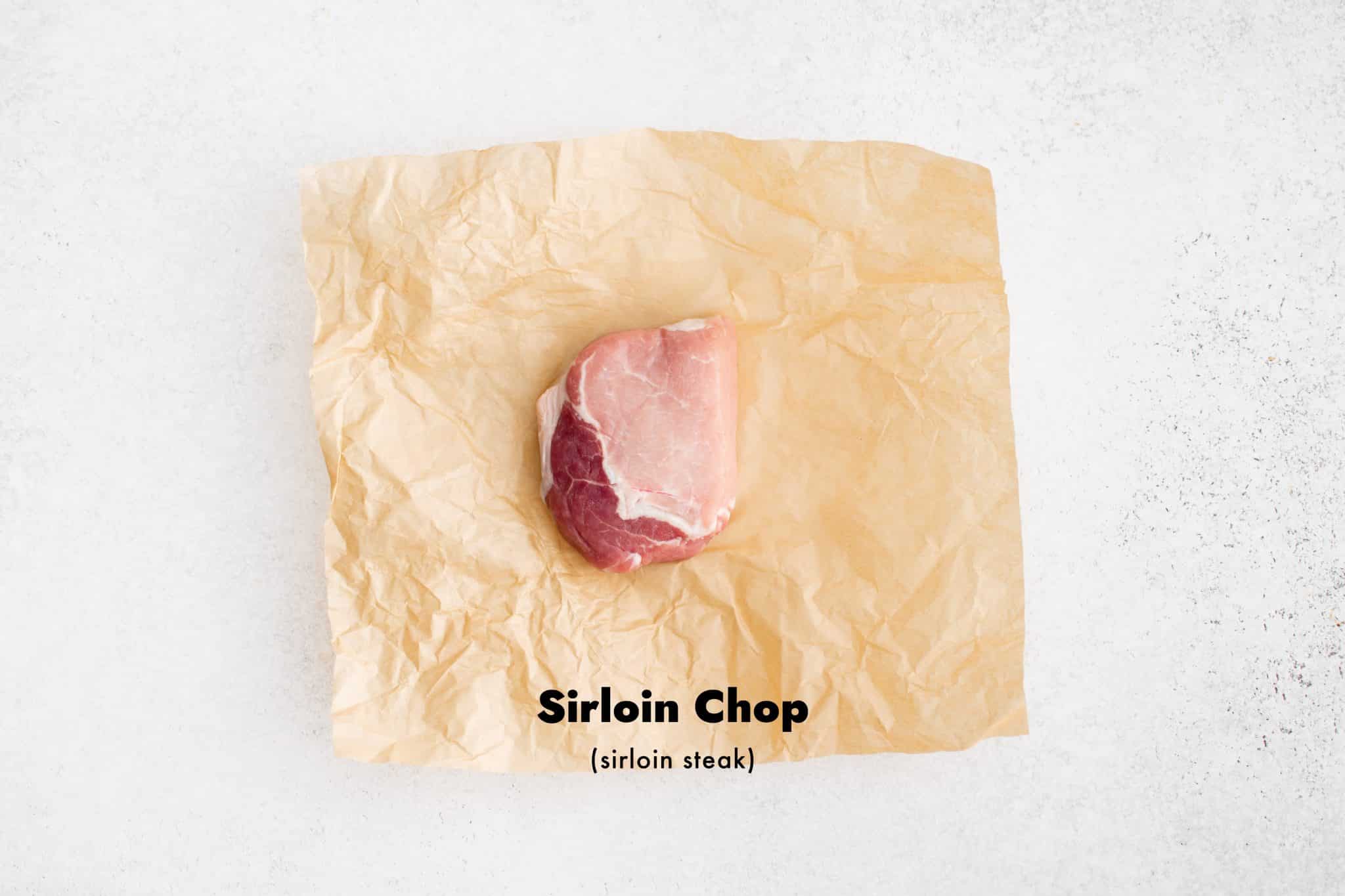
Sirloin chops—also called sirloin end chops, sirloin steaks, or pork loin sirloin chops—are typically bone-in and cut from the rear end of the loin, near the hip. These chops include multiple muscle groups, connective tissue, and a mix of light and dark meat, which makes them flavorful but more challenging to cook well.
Buying Sirloin Chops
- Look for labels like: sirloin chop, sirloin end chop, sirloin steak, or pork loin sirloin chop.
- Cut location: Back of the loin, near the hip
- Texture & flavor: Bold flavor, but requires slow cooking for tenderness.
- Bone-in or boneless: Usually bone-in with multiple small bones. Boneless sirloin chops are smaller and require trimming. They are often used as pork medallions or sliced for stir-fry. The image above is an example of a trimmed boneless sirloin chop.
- Ideal thickness: Aim for chops that are ¾ to 1 inch thick. Ask your butcher for “bone-in sirloin end pork chops, 1-inch thick” for best results.
Internal Temperature for Sirloin Chops
- Quick-cooked (grilled): 145°F (63°C) + 3-minute rest
- Braising/slow cooking: Up to 190–200°F for fork-tender texture
- Always use a digital meat thermometer to ensure perfect doneness
Best Cooking Methods for Sirloin Chops
Sirloin chops include multiple muscle groups that cook at different rates. To keep them tender, use low-and-slow cooking methods like braising or slow cooking. If grilling, marinate first and only use thin cuts.
- Grilling (thin, marinated cuts only): 4-5 minutes per side
- Braising (¾–1 inch): Sear first, then simmer in a flavorful liquid for 1.5 to 2 hours on low heat.
- Slow Cooking (any size): 6–8 hours on low, 3–4 on high
Top Tips for Cooking Pork Chops At Home
Proper preparation is just as important as choosing the right cut of pork chop. Here’s a detailed overview on how to properly prepare pork chops before, during, and after cooking:
Always Thaw Frozen Chops Before Cooking: Cooking from frozen can lead to a burned outside and undercooked center—especially with thicker cuts. Thaw them overnight in the fridge for best results. If you’re in a rush, you can use the cold water method: seal the chops in a leak-proof bag and submerge them in cold water, changing the water every 30 minutes.
Bring Them to Room Temperature: Once thawed, let your pork chops sit at room temperature for about 20–30 minutes before cooking. This helps them cook more evenly from edge to center and prevents that sudden shock of cold meat hitting a hot pan or grill. Bonus: it reduces the risk of overcooking the outside before the inside is done.
Pat Them Dry with Paper Towels: Before seasoning or cooking, give your pork chops a quick pat-down with paper towels. Removing excess moisture helps create a better sear by allowing the surface to brown rather than steam. This is especially important if you’re pan-searing or grilling. Remember, dry meat = crispy, golden crust.
Marinate or Brine (as needed, optional): Because pork is a lean meat, a little extra moisture and flavor go a long way.
- Brining: Soaking chops in a simple saltwater solution (with optional sugar and aromatics) for 30 minutes to 2 hours helps retain moisture during cooking and adds subtle flavor.
- Marinating: Great for flavoring the outside of the chop. Use acid-based marinades (with lemon, vinegar, or yogurt) or oil-based ones with herbs and spices. Just don’t overdo the time—30 minutes to 2 hours is plenty for most chops.
Season Thoroughly: Don’t be afraid to season your pork chops! Salt and pepper are a must, but go even further with a sprinkle of this homemade Cajun seasoning or ranch seasoning mixture.
Use a Meat Thermometer: This tool takes all the guesswork out of cooking pork. Stick the thermometer into the thickest part of the chop (avoiding the bone if there is one), and cook until it hits 145°F (63°C) with a 3-minute rest period. If you’re braising or slow-cooking shoulder or sirloin chops, you may want to go higher—190–200°F—to break down collagen and make the meat fall-apart tender.
Rest Before Slicing: Once your pork chops are fully cooked, don’t cut into them immediately. Let them rest for 3-5 minutes, loosely tented with foil. This gives the juices time to redistribute throughout the meat instead of spilling onto the plate.
Cooking Pork Chops on the Stove
Cooking pork chops on the stove offers a lot of versatility and flavor when done right. One of the most popular methods is pan-searing in a cast iron skillet, which gives the chops a deep, golden crust. To take it a step further, you can finish by basting them with butter, as I do in this 15-Minute Garlic Butter Pork Chops Recipe, where melted butter, garlic, and herbs are spooned over the meat for a rich, flavorful finish. If you’re working with leaner cuts like boneless chops, protecting them with a coating – like these Parmesan Crusted Pork Chops or Shake and Bake Pork Chops – can help lock in moisture and create a crispy outer layer. You can use super thin tenderized chops to make Schnitzel, while thicker ones may benefit from a stovetop-to-oven approach.
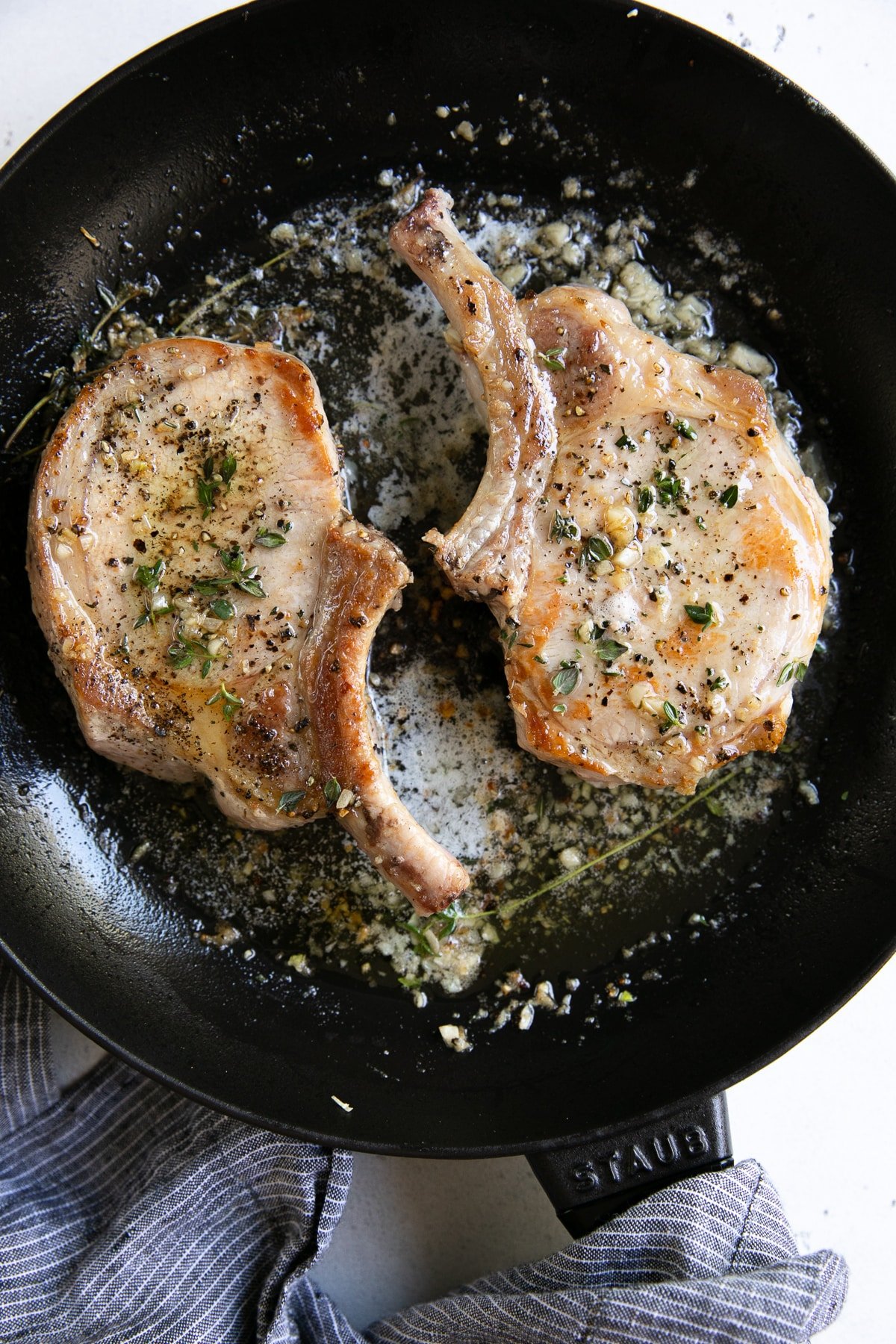
Cooking Pork Chops in the Oven
Another great way to cook pork chops is to build color and flavor in a hot skillet before finishing in the oven. In this One-Pan Apple Pork Chops Recipe, the meat goes from skillet to oven with caramelized onions and sweet apples. But you don’t always have to sear your pork chops before baking. In this easy Baked Pork Chops Recipe, we’re sticking them straight into the oven. The results are just as tender, juicy, and golden as seared pork chops.
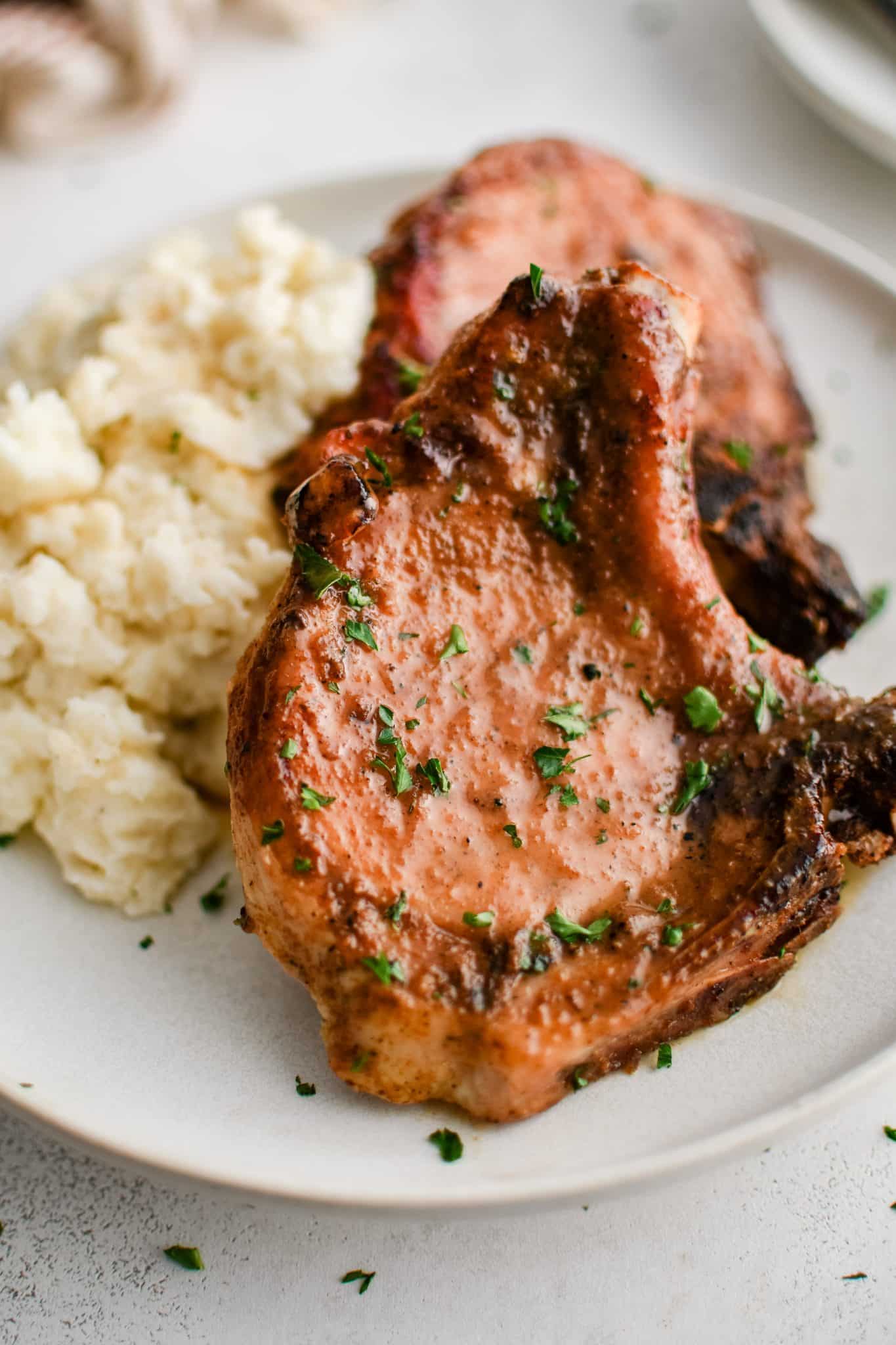
Cooking Pork Chops on the Grill
Grilling pork chops is quick, taking as little as 10 minutes over medium-high heat, depending on the cut and thickness of the meat. Some people swear by brining or marinating the chops before grilling to keep them tender. Alternatively, you can simply season and brush with oil before throwing them on the grates. It’s easy to pump up the flavor with bold sauces and marinades like Chimichurri Sauce.
Cooking Pork Chops in the Air Fryer
If you’re cooking for a small group, the air fryer is a phenomenal place to cook pork chops in less than 15 minutes. At 400°F, you can expect these Air Fryer Bone-In Pork Chops and Air Fryer Boneless Pork Chops to cook within 8-12 minutes. You can season them with a simple dry rub or flavor them with a thin layer of sauce like Japanese BBQ Sauce or Teriyaki Sauce.
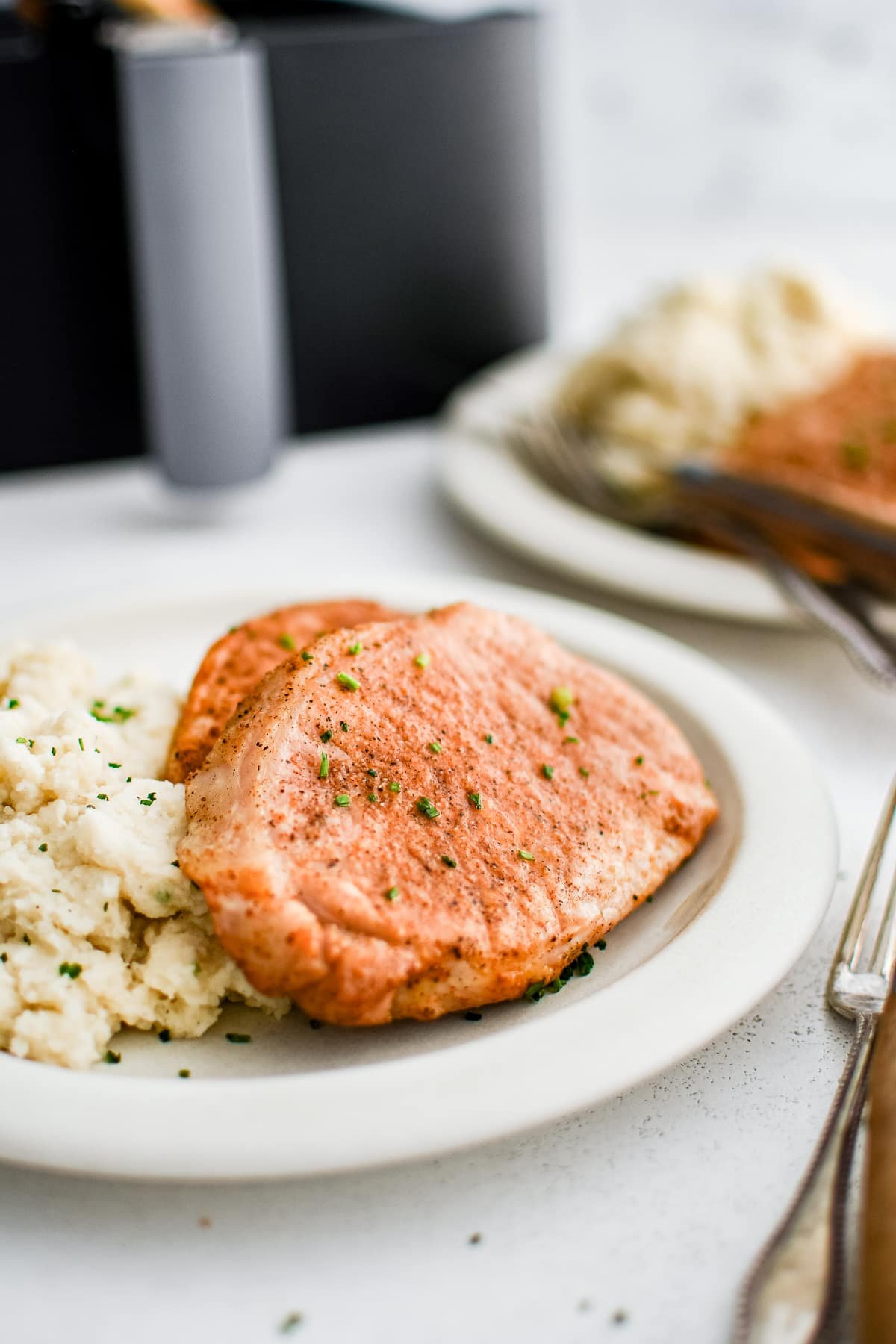
Have any questions? Drop me a message in the comment section below! I’m happy to help. And, if you enjoy this guide to the different cuts of pork chops, please leave me a comment or tag me at #theforkedspoon. Thank you!
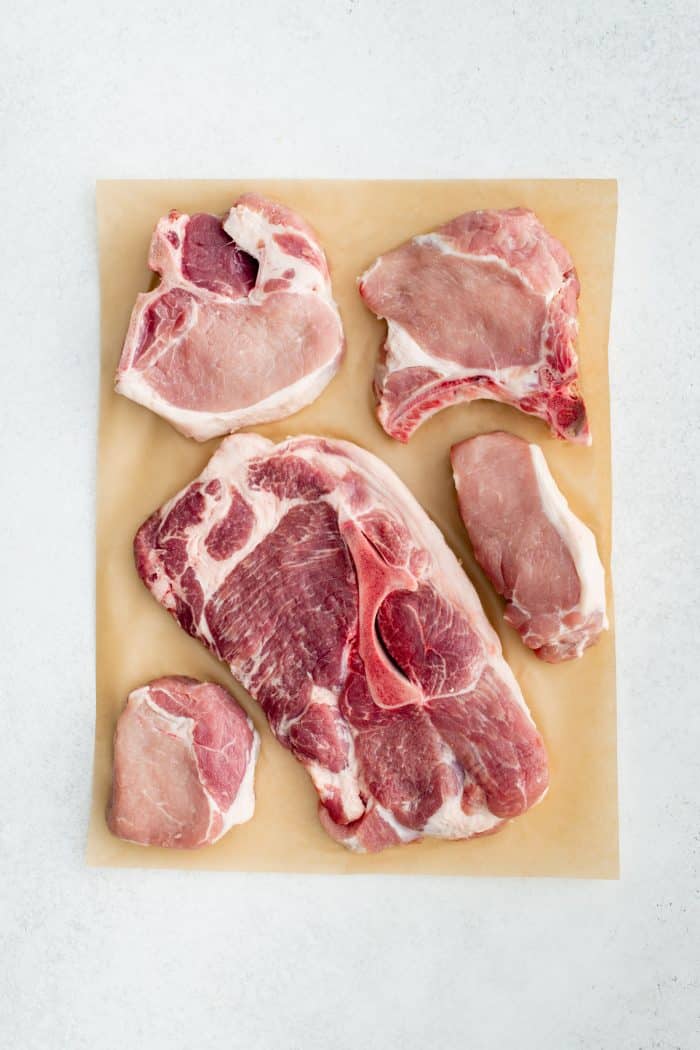
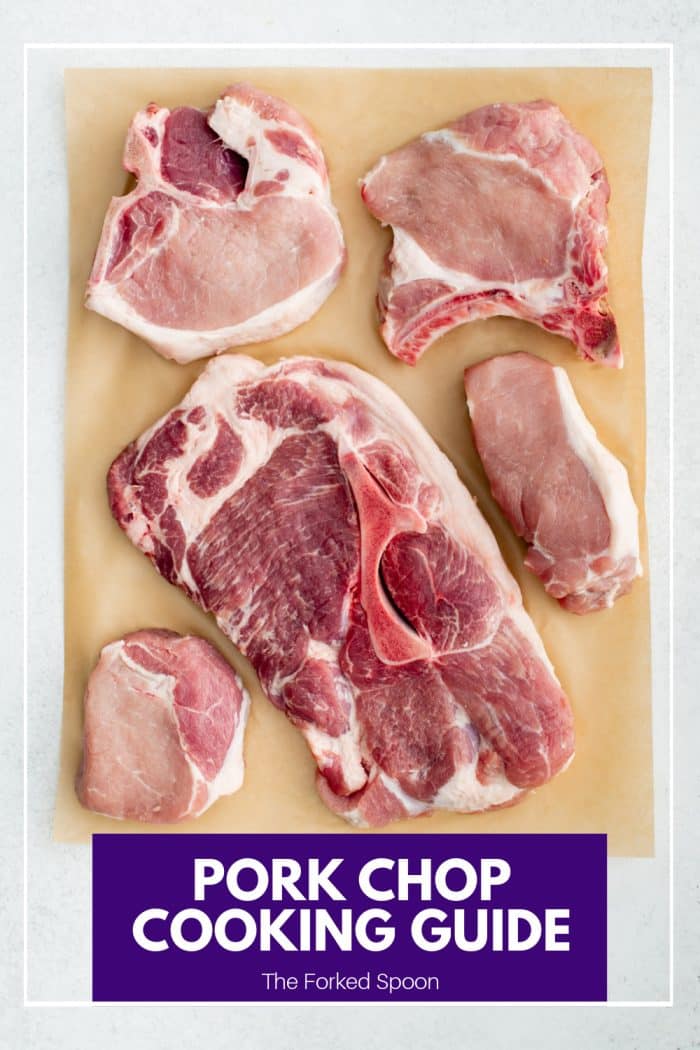

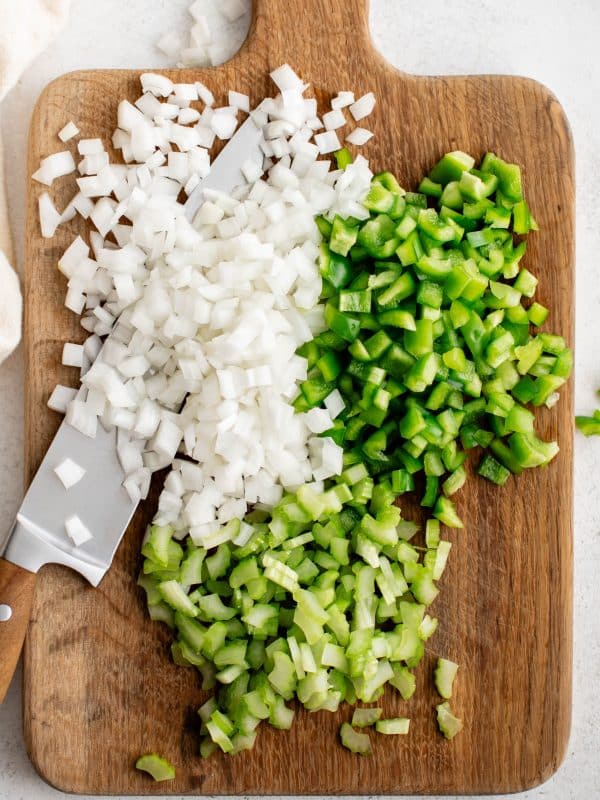
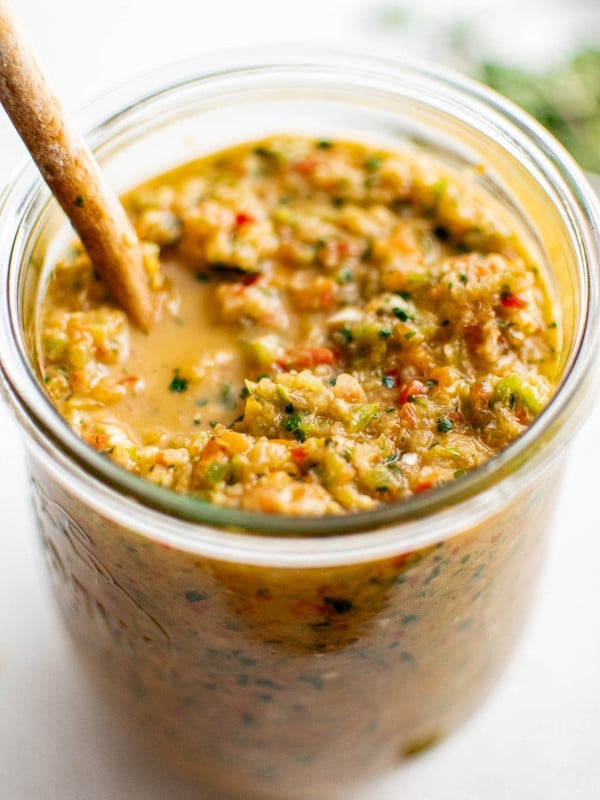

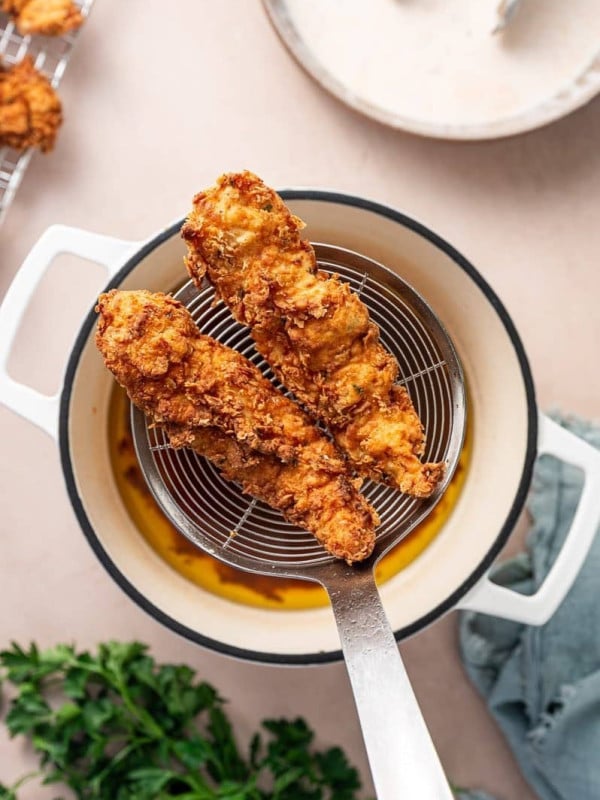








Awesome info thx a bunch!